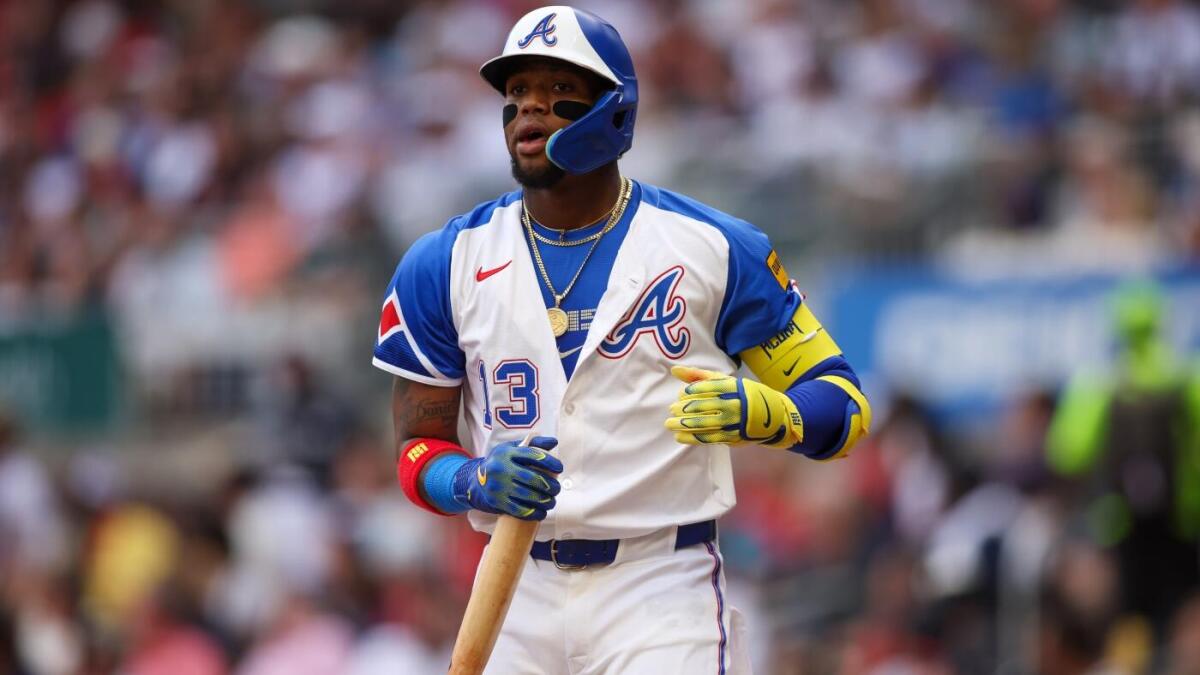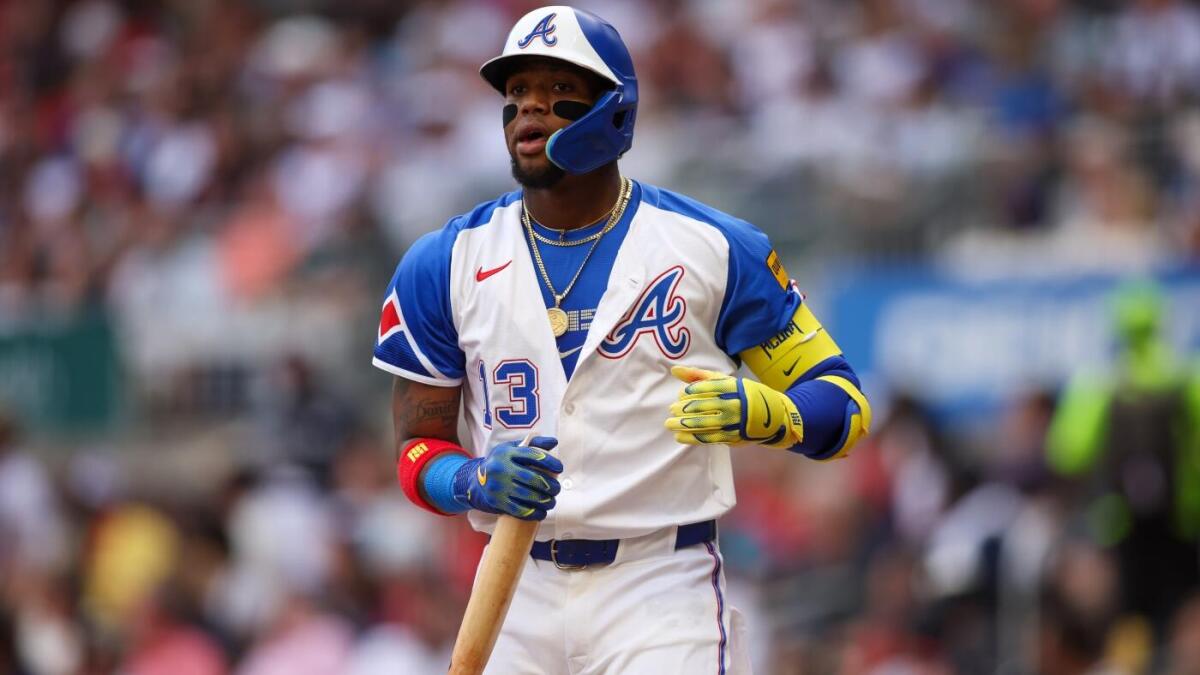Unlocking the Game: A Deep Dive into MLB Player Performance and Prop Bets
Introduction: The Intersection of Data and Strategy
Baseball has always been a game of numbers, but in the modern era, those numbers have become more sophisticated than ever. From advanced analytics to real-time performance tracking, the sport has evolved into a data-driven battleground where every pitch, swing, and defensive play is dissected for strategic advantage. As we look ahead to July 26, 2025, the intersection of player performance and prop betting presents a fascinating landscape for analysts, bettors, and fans alike.
This report explores the key factors influencing MLB player performance, dissects prop betting opportunities, and examines the strategic considerations that can give bettors an edge. Whether it’s Ronald Acuña’s total bases, Clayton Kershaw’s earned runs, or the stolen base potential of rising stars, every angle offers insights into how the game is being played—and how it can be predicted.
Decoding Prop Bets: The Art of Predicting Individual Performance
Prop bets, or proposition bets, allow bettors to wager on specific player performances rather than the outcome of the game itself. These bets add an extra layer of excitement and strategy, as they require a deep understanding of individual player tendencies, matchups, and recent form.
Ronald Acuña: Power, Speed, and Consistency
One of the most intriguing prop bets for July 26, 2025, is Ronald Acuña’s total bases. The over/under for Acuña is set at 1.5 total bases (+120), meaning he must achieve at least two bases (via hits, including extra-base hits) to cash the bet.
Acuña is a dynamic player known for his combination of power and speed. His ability to hit for extra bases makes him a strong candidate for this prop. However, several factors must be considered:
– Recent Performance: Has Acuña been hitting consistently, or has he been in a slump?
– Pitcher Matchup: Does the opposing pitcher have a history of limiting power hitters?
– Park Factors: Is the game being played in a hitter-friendly or pitcher-friendly ballpark?
If Acuña has been hitting well and faces a pitcher with a high ERA against left-handed hitters, the over bet may be a strong play.
Clayton Kershaw: The Ageless Ace
Another key prop bet involves Clayton Kershaw’s earned runs allowed, with the under 2.5 earned runs (+100) being a popular wager. Kershaw, despite his age, remains one of the most reliable pitchers in the league.
To assess this bet, consider:
– Kershaw’s Recent Form: Has he been pitching deep into games with low run support?
– Opposing Lineup: Does the team he’s facing have a strong offense, particularly against left-handed pitching?
– Defensive Support: Is his team’s defense strong enough to prevent extra-base hits?
If Kershaw is in top form and facing a weaker lineup, the under bet could be a safe choice.
Pete Alonso: The Power Threat
Pete Alonso, known for his home run prowess, presents another prop betting opportunity with an over 0.5 home runs bet. Alonso’s ability to hit for power makes him a consistent threat, but his performance depends on:
– Pitcher Matchup: Does the opposing pitcher struggle against right-handed power hitters?
– Ballpark Factors: Is the game being played in a stadium with favorable dimensions for home runs?
– Recent Performance: Has Alonso been hitting for power, or has he been in a slump?
If Alonso is facing a pitcher with a high home run rate and the game is in a hitter-friendly park, the over bet may be worth considering.
Batter vs. Pitcher Matchups: The Chess Game of Baseball
One of the most strategic aspects of baseball is the batter-pitcher matchup. Every pitcher has strengths and weaknesses, and every hitter has tendencies that can be exploited—or countered.
Trevor Story vs. Clayton Kershaw: A Clash of Styles
Trevor Story, a right-handed hitter, faces Clayton Kershaw, a left-handed pitcher. This matchup is particularly interesting because:
– Story’s Performance Against Lefties: Does Story struggle against left-handed pitching?
– Kershaw’s Pitching Style: Does Kershaw rely on breaking balls that Story might struggle to hit?
If Story has a high strikeout rate against lefties, Kershaw may have the upper hand. Conversely, if Story has a history of hitting well against Kershaw, he could be a strong offensive threat.
Starling Marte vs. Robbie Ray: Speed vs. Power
Starling Marte, another right-handed hitter, faces Robbie Ray, a left-handed pitcher. This matchup is worth analyzing because:
– Marte’s Splits Against Lefties: Does Marte hit for power against left-handed pitching?
– Ray’s Pitching Repertoire: Does Ray rely on high-velocity fastballs that Marte might struggle to make contact with?
If Marte has a history of hitting well against lefties, he could be a strong candidate for extra-base hits. Conversely, if Ray is in top form, Marte may struggle to get on base.
Stolen Base Targets: The Art of the Steal
Stolen bases are one of the most exciting plays in baseball, and certain players are more likely to attempt steals based on their speed, base-running instincts, and game situations.
Elly De La Cruz: The Rising Speedster
Elly De La Cruz is a name to watch for stolen base potential. His inclusion on the list suggests he has:
– Exceptional Speed: De La Cruz is known for his blazing speed, making him a constant threat on the basepaths.
– Aggressive Base Running: He may be more likely to attempt steals in high-pressure situations.
If De La Cruz is on base early in the game, he could be a strong candidate for a stolen base.
Shohei Ohtani: The Two-Way Threat
Shohei Ohtani is a unique player who excels both as a hitter and a pitcher. His inclusion on the stolen base list suggests:
– Speed and Power Combo: Ohtani has shown the ability to steal bases when needed.
– Game Situational Awareness: He may be more likely to attempt steals in close games.
If Ohtani is on base with a runner in scoring position, he could be a strong candidate for a stolen base.
Projecting Performance: Strikeouts and Walks
Pitchers and hitters are constantly evaluated based on their strikeout and walk rates. These metrics provide insights into a player’s effectiveness and can be crucial for prop betting.
Strikeout Projections: Dominance on the Mound
A pitcher with a projected 12.2 strikeouts per nine innings (K/9) and a 34.2% strikeout rate is considered elite. To assess this projection, consider:
– Pitch Repertoire: Does the pitcher have a diverse arsenal of pitches?
– Opposing Lineup: Does the team he’s facing have a high strikeout rate?
– Pitch Location: Is the pitcher known for pinpoint accuracy?
If the pitcher has a strong fastball and a reliable breaking ball, he could be a strong candidate for a high strikeout total.
Walk Rates: The Art of Plate Discipline
A high walk rate can be a double-edged sword. For pitchers, it can lead to inflated pitch counts and early exits. For hitters, it demonstrates plate discipline and the ability to draw free passes.
– Pitcher’s Control: Does the pitcher struggle with command, leading to more walks?
– Hitter’s Patience: Does the hitter have a history of working deep counts?
If a pitcher has a high walk rate, bettors may look for opportunities to wager on high-scoring games. Conversely, if a hitter has a high walk rate, they may be a strong candidate for a high on-base percentage (OBP).
The All-Star Game Perspective: Performance Under Pressure
The All-Star Game is a unique event where players perform under high-pressure, exhibition-style conditions. Analyzing performance in this setting can provide insights into a player’s consistency and ability to handle diverse pitching styles.
– Shohei Ohtani and Ronald Acuña: Both players ranked relatively low in strikeout rate during the All-Star game period, suggesting they may be more selective at the plate.
– Freddie Freeman: His performance in the All-Star Game may indicate his ability to adapt to different pitching styles.
Understanding how players perform in high-stakes, exhibition-style games can help bettors assess their overall consistency.
Lineups and Roster Percentages: Strategic Considerations
Daily lineups and roster percentages provide critical information for bettors and fantasy players. RotoWire’s player roster percentage projections indicate how widely owned a player is in fantasy leagues, offering insights into their perceived value and potential impact.
– Starting Lineups: Knowing which players are in the starting lineup can significantly impact prop betting decisions.
– Roster Percentages: High roster percentages suggest a player is widely regarded as a strong performer, while low percentages may indicate undervalued opportunities.
Adapting to the Unexpected: Injuries and Late Scratches
Despite meticulous preparation, unforeseen circumstances can disrupt even the best-laid plans. Injuries, late scratches, and weather delays are inherent parts of baseball, and successful bettors must remain adaptable.
– Injury Reports: A key player’s injury can drastically alter the dynamics of a game.
– Late Scratches: A last-minute lineup change can create new prop betting opportunities.
– Weather Conditions: Rain delays or extreme heat can impact player performance.
Conclusion: The Future of Baseball Analytics
Analyzing MLB player performance and prop bets is a multifaceted endeavor that requires a deep understanding of statistics, player tendencies, and game dynamics. While data provides a foundation, the human element—player mindset, adaptability, and the unpredictable nature of baseball—remains crucial.
As the sport continues to evolve, so too will the strategies for analyzing and betting on player performance. Whether you’re a seasoned analyst or a casual fan, the pursuit of knowledge enhances the enjoyment of the game. The future of baseball lies not just in the numbers, but in the stories they tell—and the edges they reveal.












